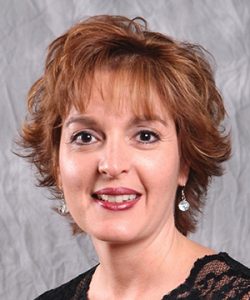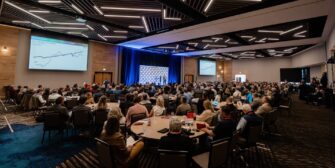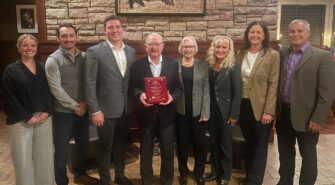3 Family Businesses Honored with Awards from Prairie Family Business Association
Recent News
Shipshape or shipwreck – How would you rate your business?
The USS Benfold’s performance ranked it near the bottom of the Navy’s fleet when Capt. Mike Abrashoff became its leader.
As part of changing the culture, Abrashoff would ask his crew: “What would you do? It’s your ship.”

“I found that the more control I gave up, the greater command I got over the organization,” he said.
His powerful message was a hit with attendees in 2017 at the annual Prairie Family Business Conference.
To kick off the 2018 event, Stacey Cunningham, Abrashoff’s co-founder at the Aegis Performance Group, will revisit his themes and encourage family businesses to take stock of their own leadership and culture.
To learn more and register, click here.
We visited with Cunningham to learn more about what families can take away from this year’s event.
We’ve all been there: You go to a great conference, hear some powerful takeaways and then don’t always use them as optimally as you could. Give us a preview of how you’ll pick up where Mike Abrashoff left off.
Capt. Mike Abrashoff’s story of remarkable change is chronicled in his Wall Street Journal best-selling business book, “It’s Your Ship.” Mike shares what he did to transform USS Benfold from the worst ship in the Pacific Fleet to the best using the same crew and within the same hierarchical culture of the Navy. During these take-action sessions, we will drill down into how he achieved his phenomenal results. Leaders will leave their session not only energized, but with a viable take-action plan that will allow them to achieve breakthrough results. My session provides you with unprecedented access to the some of the exact tools and tactics Mike used on USS Benfold to transform from underperforming to exceptional performance.
What are some of the biggest challenges you see families encountering?
Family businesses are the backbone of the economy of the United States. They create jobs, pay taxes and help build communities. Conflicts are part of a normal experience for many organizations, especially family-owned businesses. However, for those who are sharing space at home and work, a family business can create unique challenges. While the knowledge passed down through generations can be the business’ strength, family-run businesses can present some unique entrepreneurial challenges, including improper delegation of duties, undefined roles and responsibilities, and familial relationships that pull at emotions and can cause skewed or emotionally driven business decisions.
What’s one of the key takeaways from the USS Benfold that other businesses can use?
At the end of the day, every business — whether it’s a ship in the middle of the Pacific Ocean, a large multinational organization or a family-owned business —they all are built on trust, communication and relationships. On the Benfold, Mike made it a point to lead with positive intent and get to know every person on a human level. I think many times, especially in a family-owned business when you have been around one another, grown up together and have a built-in hierarchy — I speak from a position of authority being that middle child — it’s so easy to jump to conclusions, make assumptions and forget that people grow, develop and change over time. I think no matter what size your business is that it is critical to always ask before telling to ensure you are truly understanding the other person’s perspective. I think the best takeaway is to just ask. Use more questions, and listen aggressively.
What kind of impact have you seen other leaders make by applying these principles?
When you think about what Mike did and what we are going to focus on in our session is getting back to the basics. It’s so easy to get caught up in the calls, meetings, conflicting priorities that we don’t make time to connect with people on a regular basis. As leaders, especially in this age of technology, it is more important than ever to stop, turn off the electronics and make time to ask, listen, plan, share and work together toward goals. Leaders are always amazed when they practice these principles how many great ideas their people have to solve their toughest business challenges. Leaders learn through our process to be open to these ideas and start with yes — being willing to be open to other perspectives and new ideas no matter someone’s rank or position or tenure. What we’ve seen is people learn to hit the pause button and focus on what matters most — their people.
Families will leave your presentation with a take-action plan. How will this help them going forward?
I always know that people leave sessions filled with great ideas and the best of intentions to implement them. But then reality sets in upon returning back to work after the conference — calls, meetings and conflicting priorities get in the way. So with this in mind, I always have my sessions end with one to three very specific things they are going to do that they learned when they get back. That way the hard part is done — thinking and planning. They just need to do!



